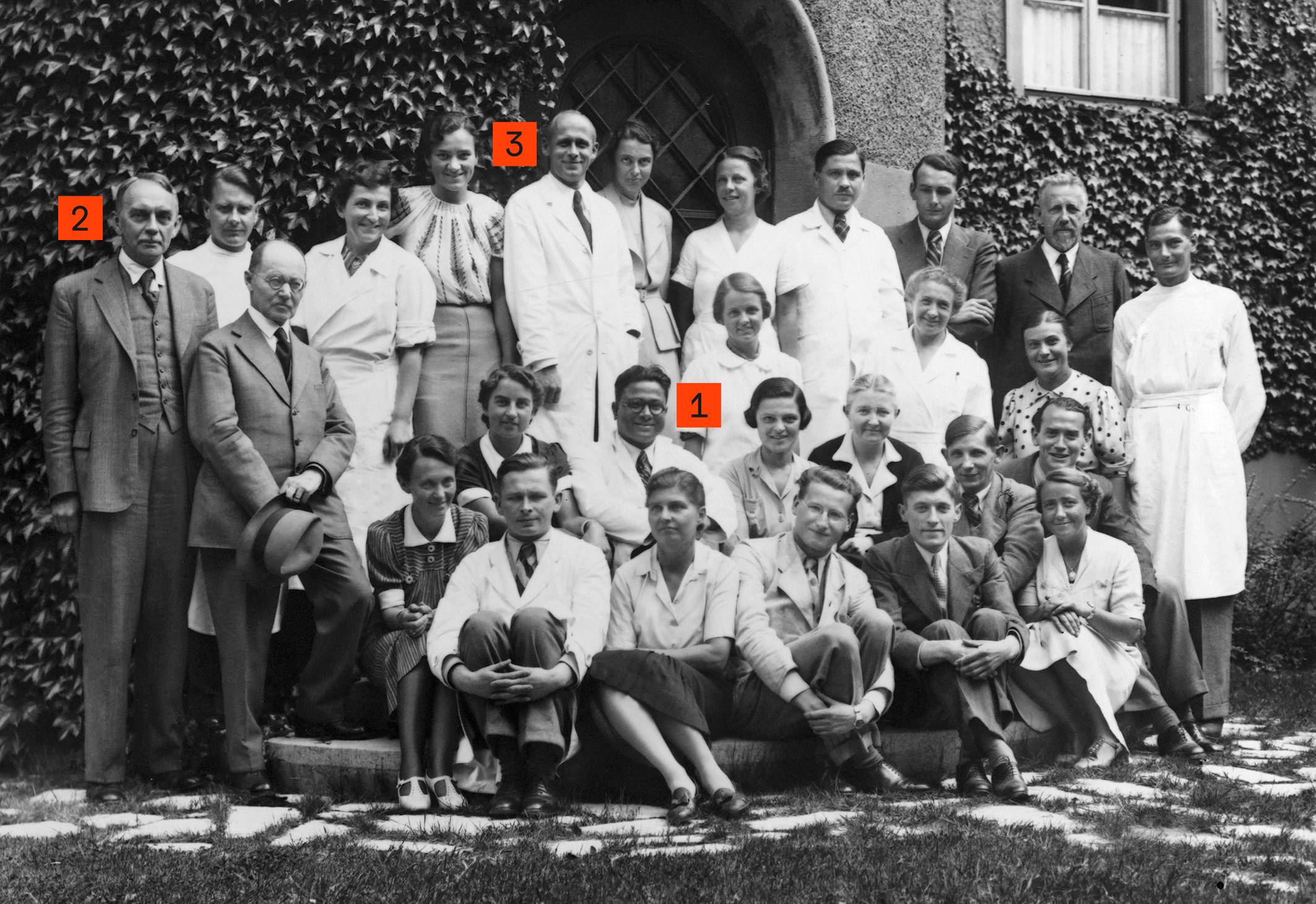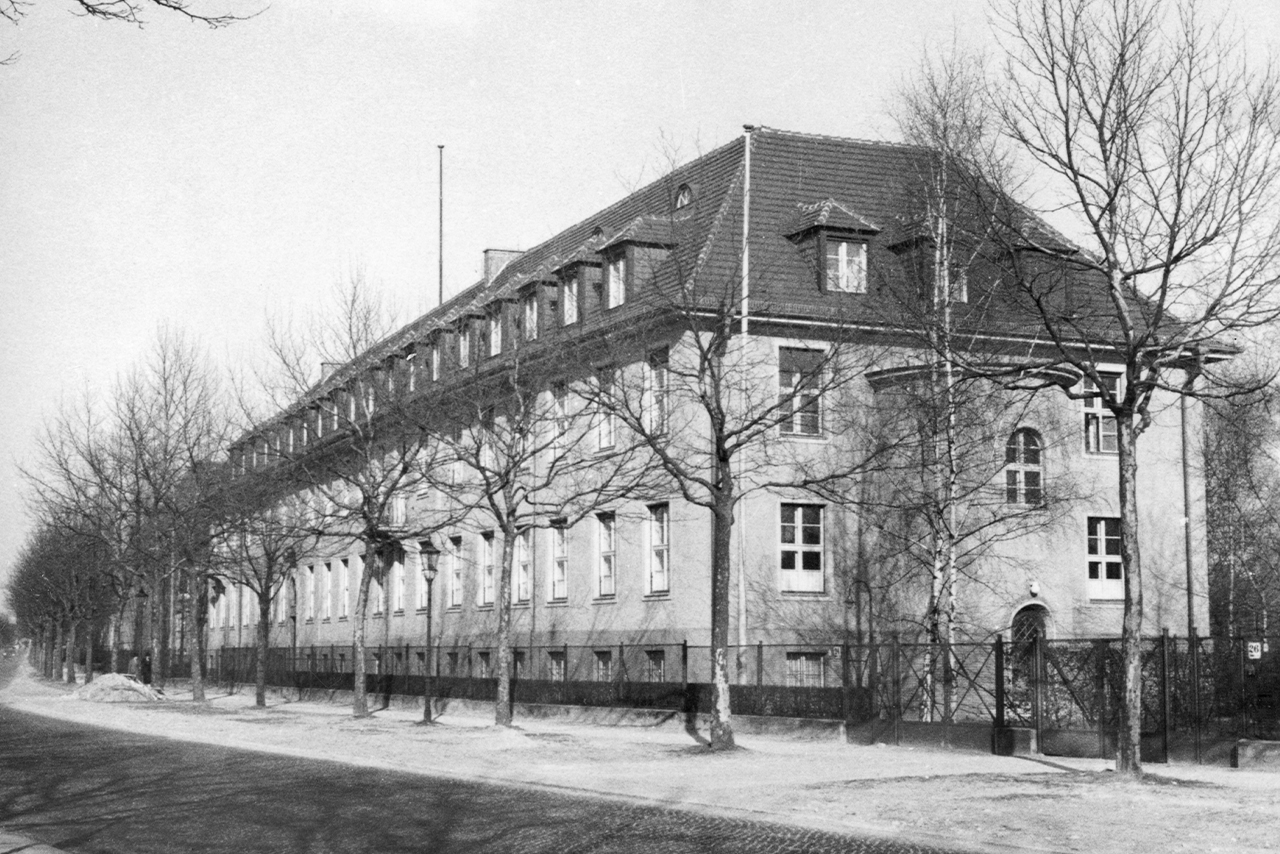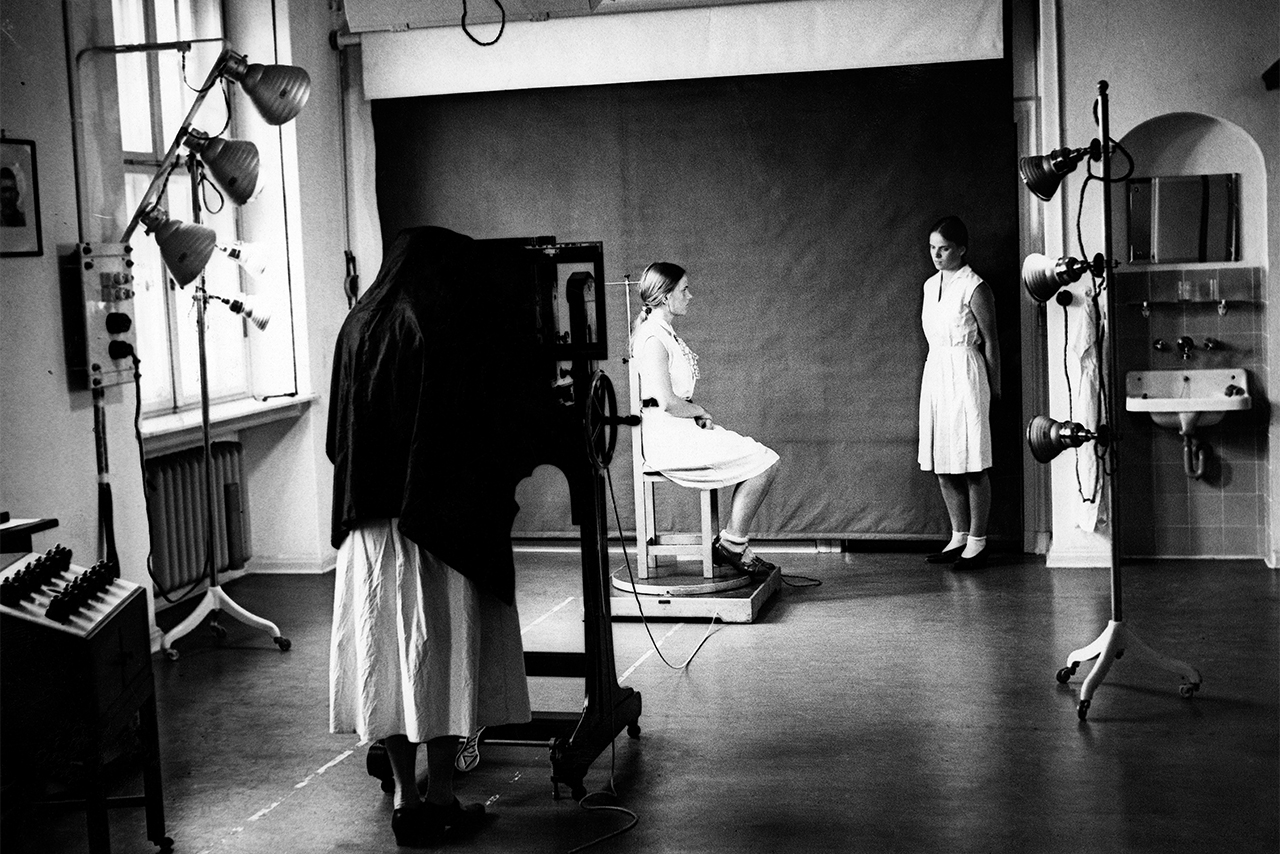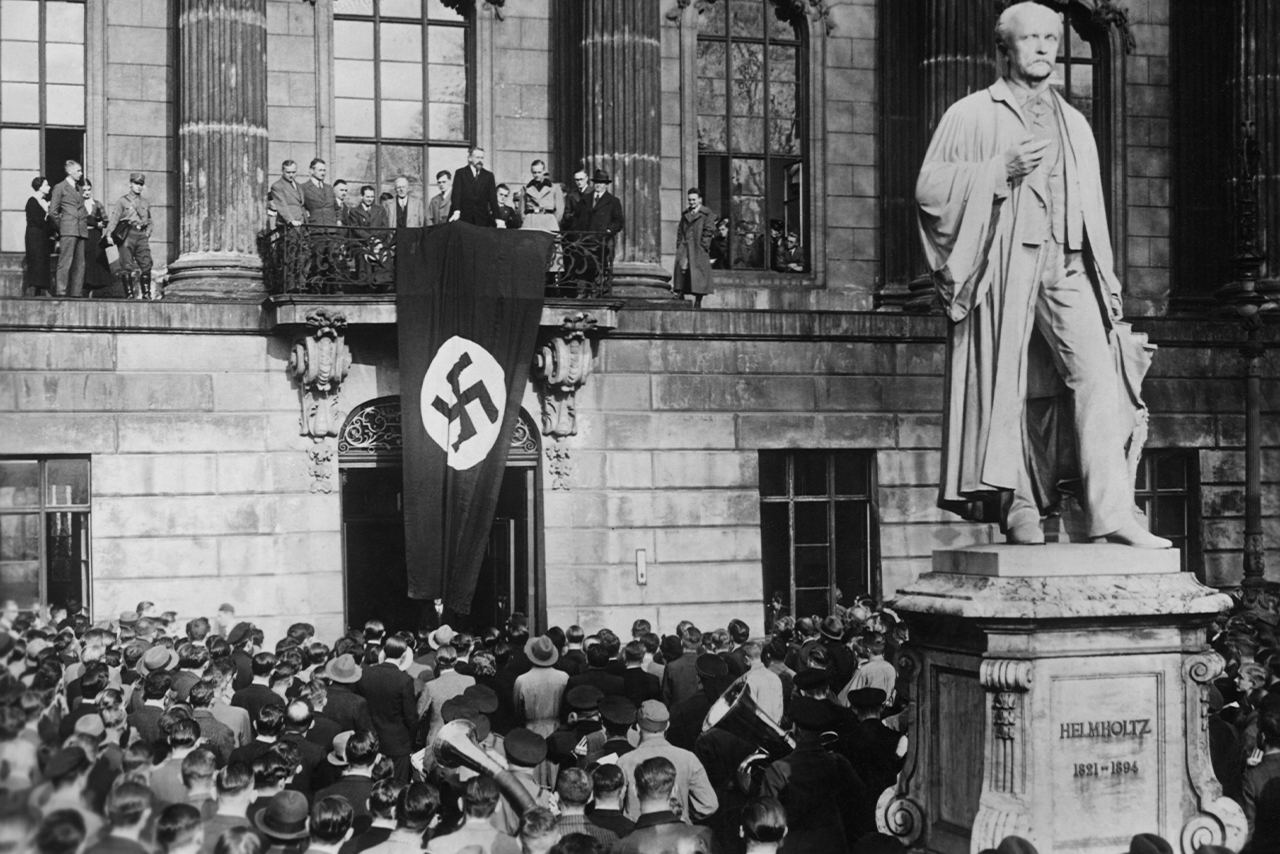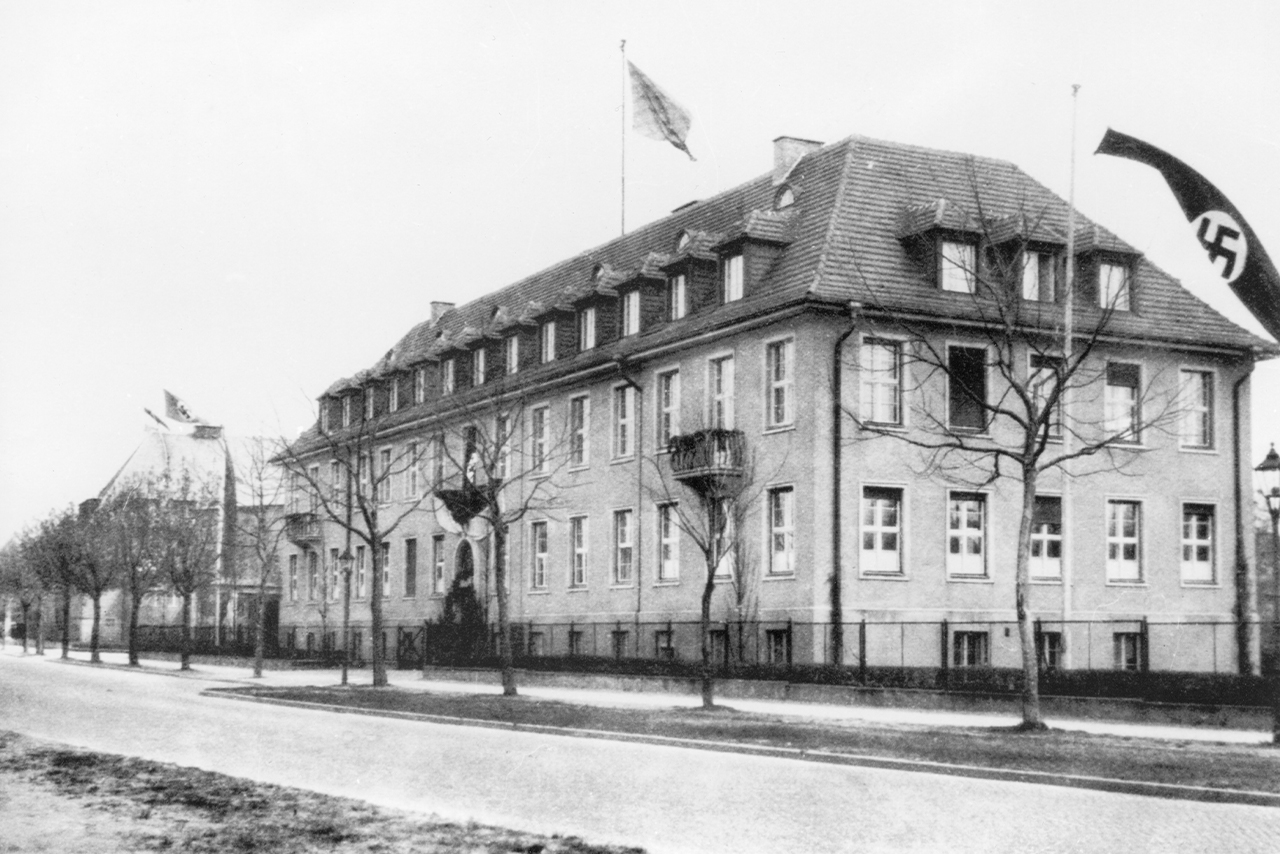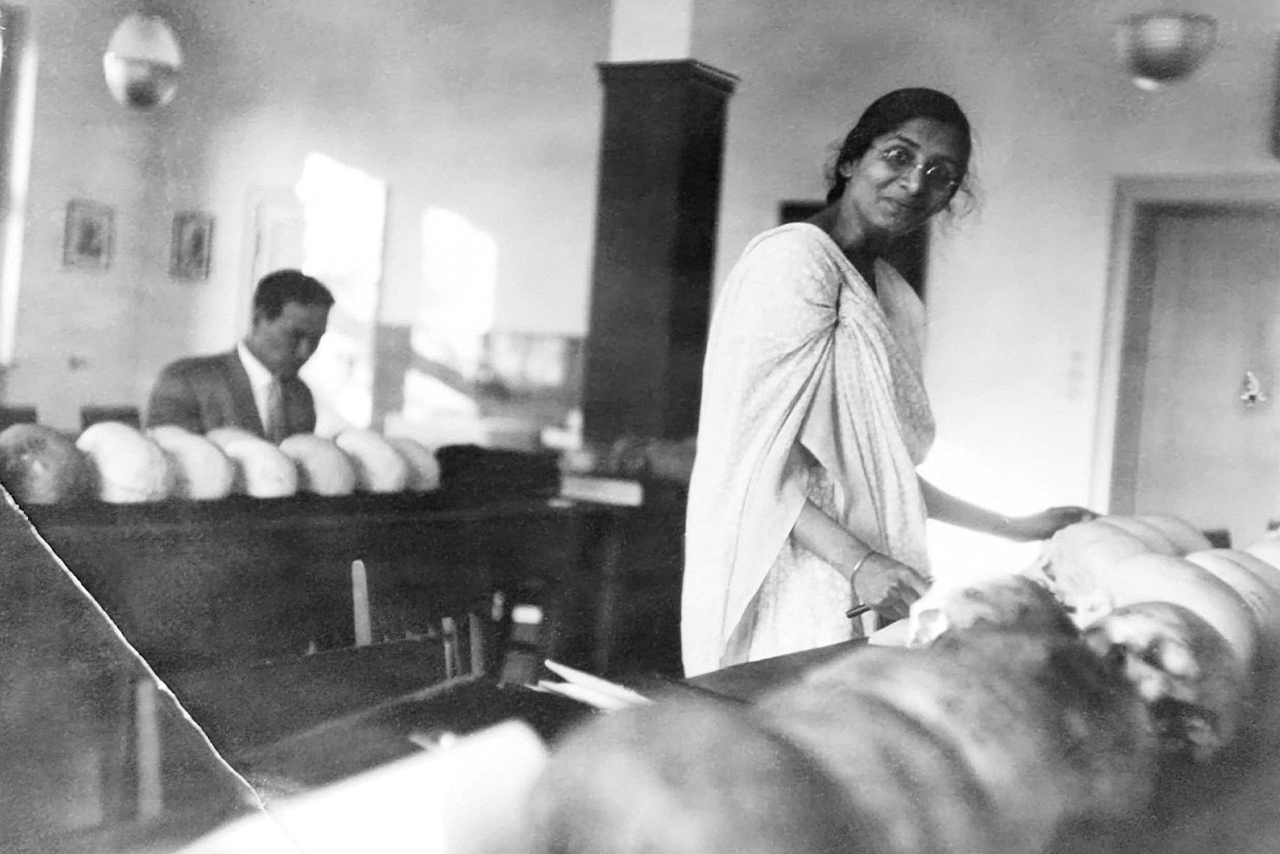SCIENTIFIC
EXCELLENCE
―
SOCIAL
EXCLUSION
“Many scientists and university teachers best served the Nazi regime precisely by committing themselves to producing the best possible research and teaching within the regime’s ideological framework.”
Mitchell G. Ash, historian
Between 1927 and 1945, there were up to 50 scientists at a time conducting research at the Kaiser Wilhelm Institute for Anthropology, Human Heredity, and Eugenics. They investigated how humans inherit both traits and diseases. The international scientific community considered their methods to be the most advanced in human genetics.
At the same time, research at the Institute was inextricably linked to a belief in the inequality of humans. Researchers wanted to eradicate ill and disabled people, and racialised others including Jews, Roma, Sinti and Black people from German society. The National Socialists’ seizure of power was an opportunity for the Institute to put eugenic ideas into practice.
The staff poses for a group photo. The suits and lab coats convey seriousness and a drive for scientific knowledge. When the photo was taken in 1939, around 300,000 people had already been sterilised against their will. Members of the Institute undertook the preparatory work for these forced sterilisations.
1
The Indian anthropologist Sasanka Sekhar Sarkar (1908–1969) studied around 100 sets of twins from 1938 to 1940 to find out how palm lines are inherited. In the 1950s, at the University of Calcutta, he called for biological knowledge to be used to prevent population decline. He proposed that marriages should be allowed starting at the average age from when teenagers begin to menstruate.
2
In October 1933, Fritz Lenz (1887–1976) took over as Head of the Department of Eugenics, which was renamed Department of Racial Hygiene. Together with Institute Director Eugen Fischer, he worked on two new editions of the canonical work “An Outline of Human Heredity and Racial Hygiene”. In the book, he describes how, in his view, undesirable characteristics and illnesses are inherited.
3
From 1927 Otmar von Verschuer (1896–1969) headed the Department of Human Heredity. His research looked into the influence of both environmental and genetic factors on human development through the study of twins. In his publications, he consistently emphasised the significance of hereditary traits. According to Verschuer, individuals who, in his view, had undesirable genetic traits should not have children.
What is heredity research and why is it so appealing?
Video commentary by
Prof. Dr. Staffan Müller-Wille, University of Cambridge
3:28 min.

